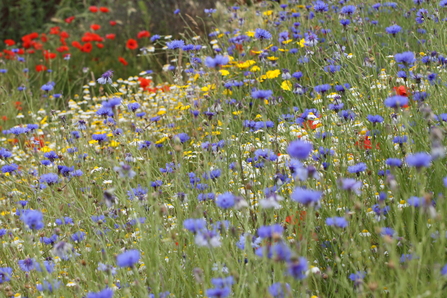From Monday 12th February, a new era for nature-positive development will begin when Biodiversity Net Gain (BNG) becomes mandatory for most new development in England. The new requirement means that wildlife habitat must be left in a better state than it was before a development took place.
In Suffolk, we are calling for more ambitious targets to increase nature, including in West Suffolk’s emerging Local Plan, which is open for public consultation until the 12th of March.
The Wildlife Trusts have been influencing the evolution of BNG for well over a decade – and want to see high standards, and meaningful action, set for its delivery. We are in a nature crisis – with one in six species are at risk of extinction - and the UK is one of the most nature depleted countries in the world. Done well, BNG could make a positive contribution towards nature’s recovery and help address the climate emergency in the process.
However, as it is currently proposed, the policy does not do enough to make development truly nature-positive, or help reverse wildlife loss.

